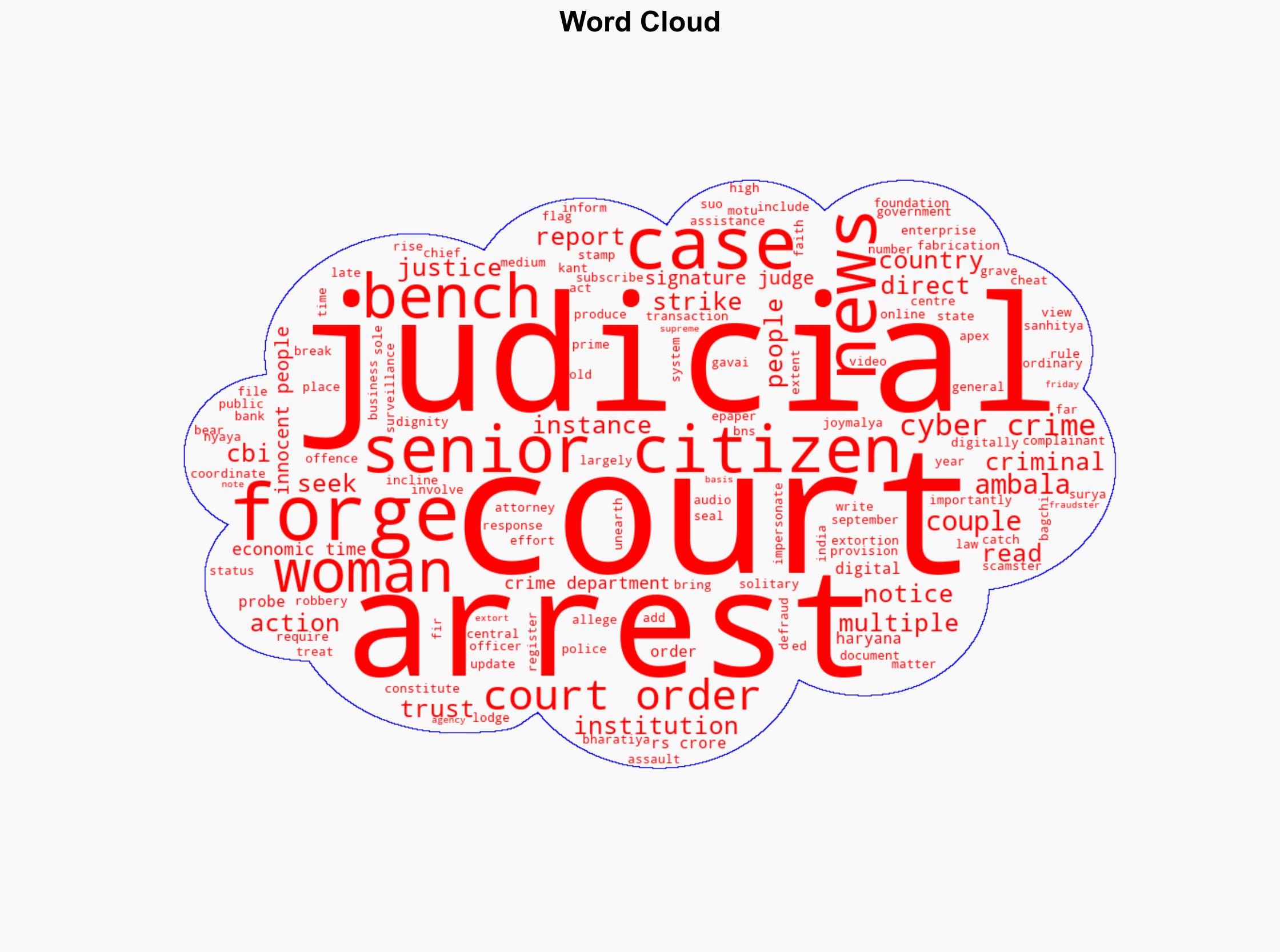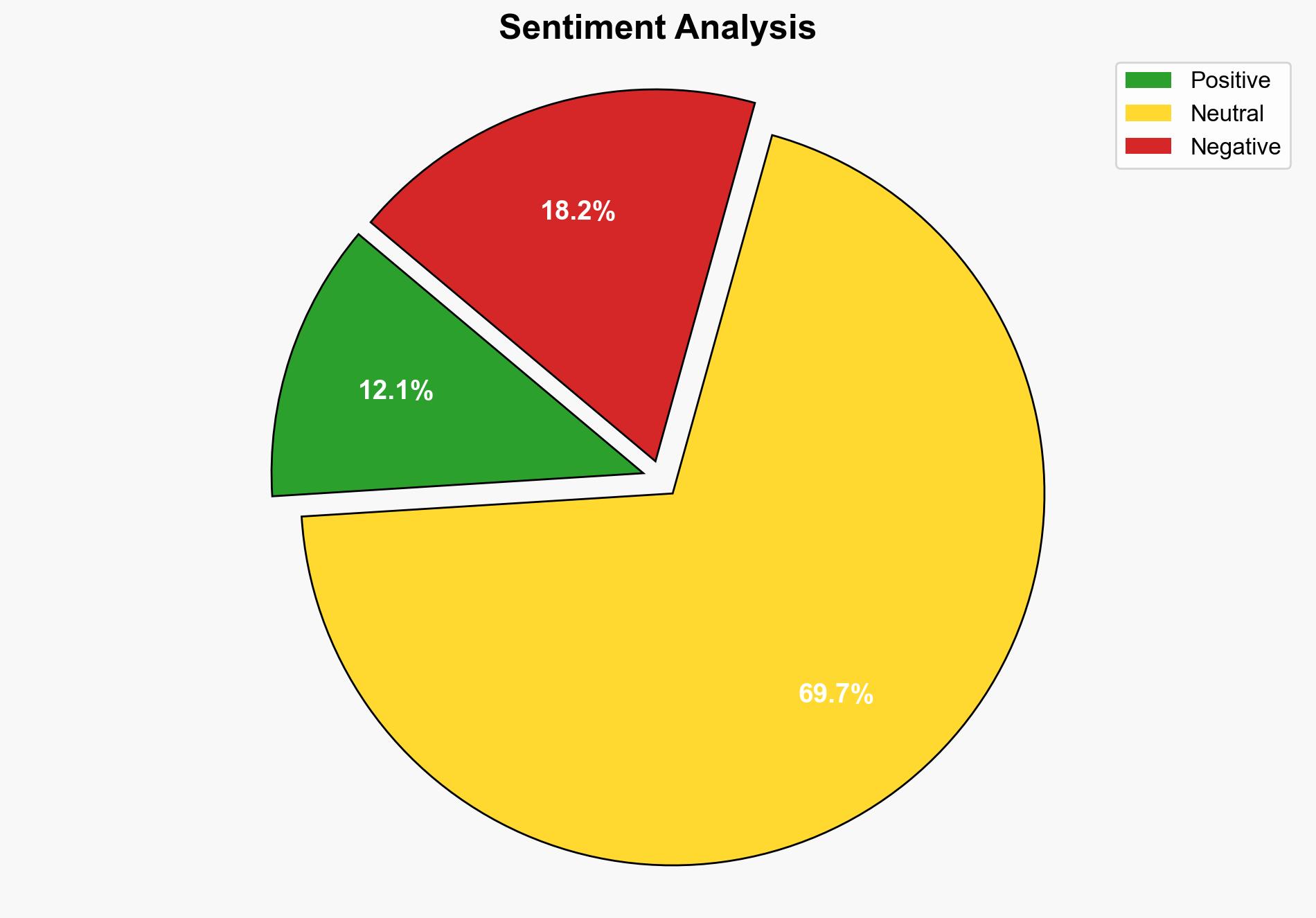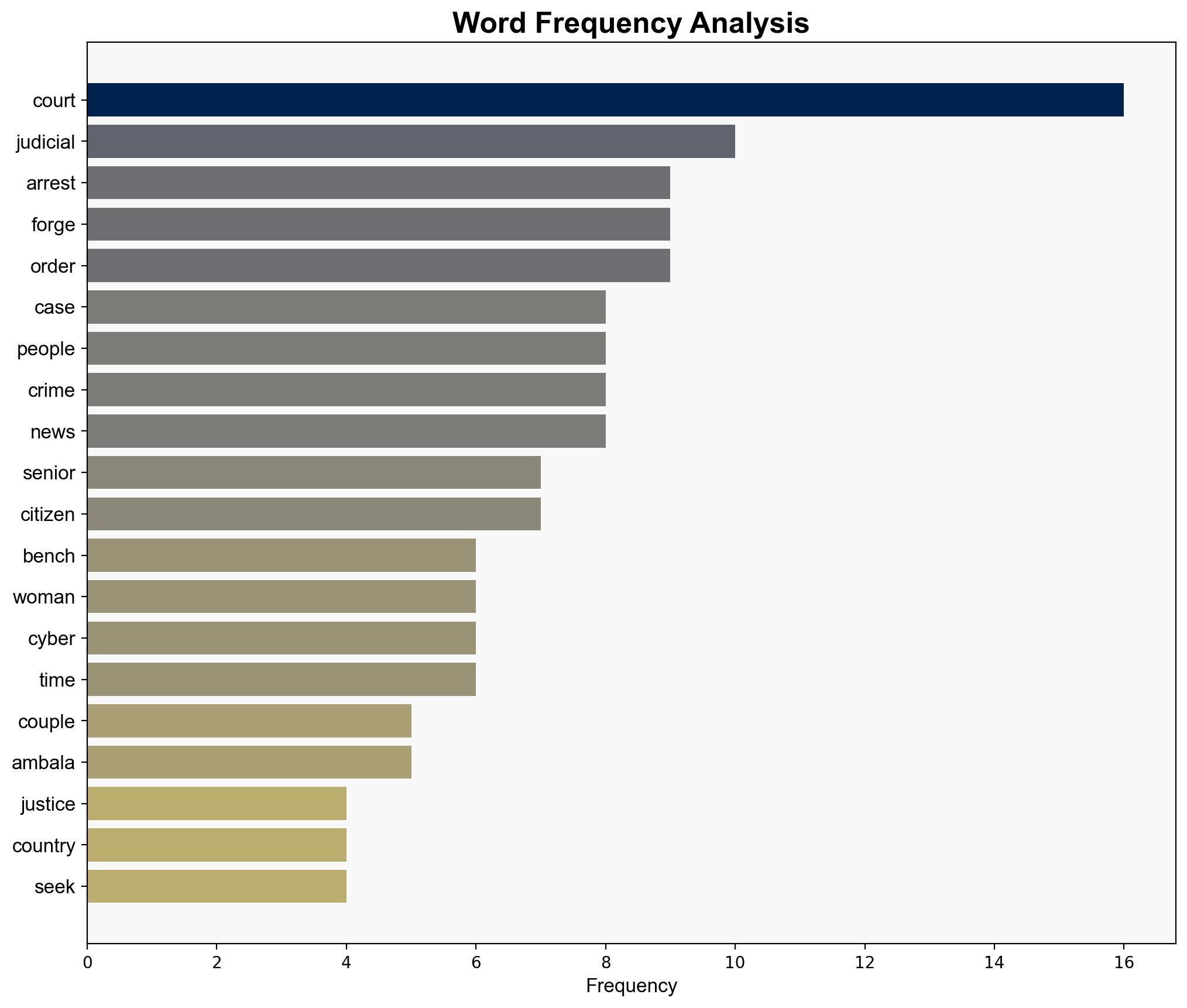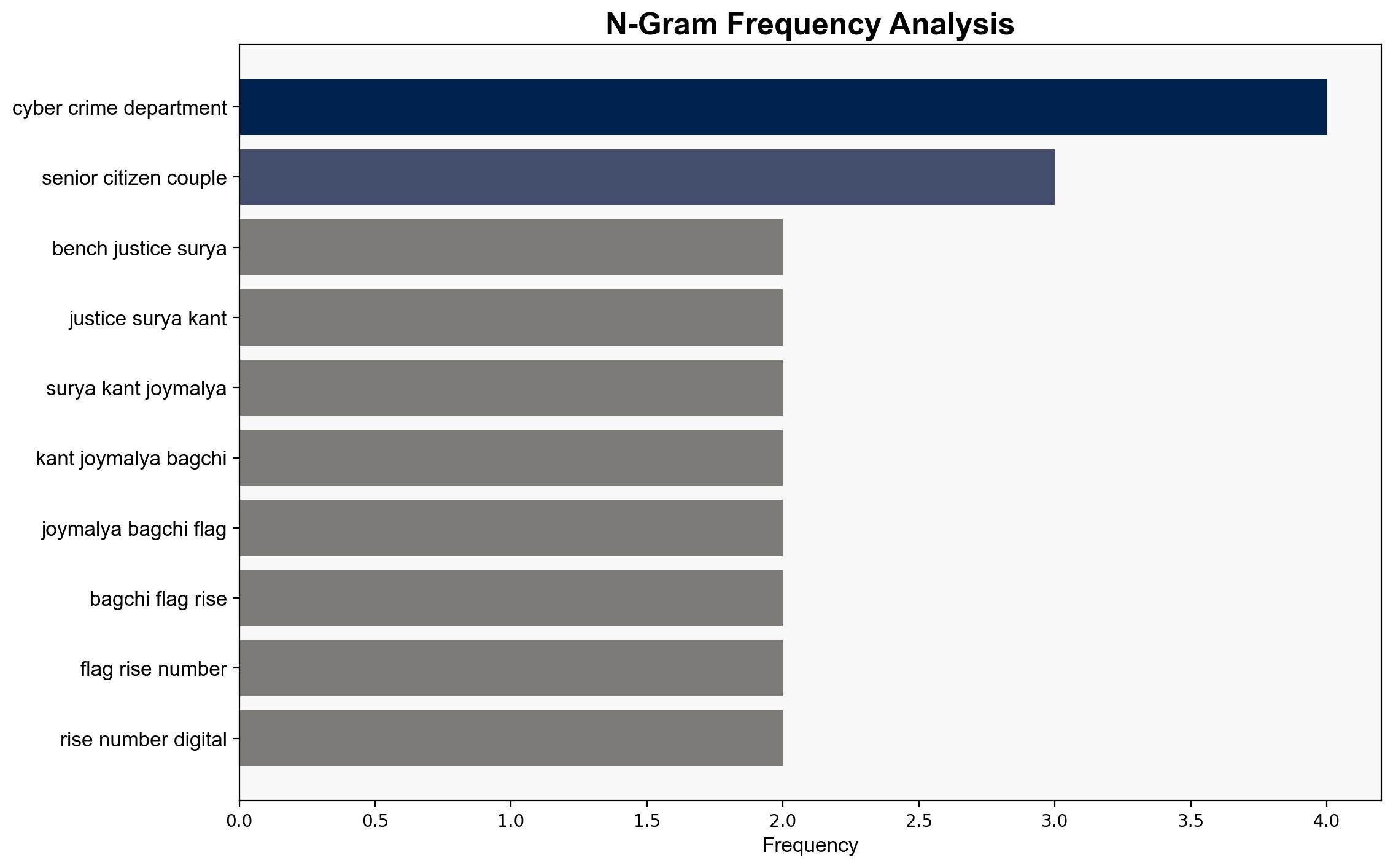SC voices concern over rising instances of digital arrest in country seeks Centre’s response – The Times of India
Published on: 2025-10-17
Intelligence Report: SC voices concern over rising instances of digital arrest in country seeks Centre’s response – The Times of India
1. BLUF (Bottom Line Up Front)
The Supreme Court’s concern over the rise in digital arrest cases highlights a significant threat to public trust in judicial institutions. The most supported hypothesis suggests a sophisticated criminal network exploiting digital vulnerabilities. Immediate action is recommended to enhance cybersecurity measures and inter-agency coordination. Confidence Level: Moderate.
2. Competing Hypotheses
Hypothesis 1: A well-organized criminal enterprise is systematically exploiting digital vulnerabilities to forge judicial documents and execute fraudulent arrests, targeting vulnerable populations like senior citizens.
Hypothesis 2: The rise in digital arrest cases is primarily due to isolated incidents of opportunistic fraudsters exploiting systemic weaknesses in digital document verification processes.
Using Analysis of Competing Hypotheses (ACH), Hypothesis 1 is better supported by the complexity and coordination required to forge court orders and impersonate officials, as indicated by multiple bank transactions and impersonation of CBI and ED officers.
3. Key Assumptions and Red Flags
– Assumption: The forgeries require significant technical expertise and insider knowledge.
– Red Flag: Lack of detailed information on how the forgeries were executed and the extent of the network.
– Potential Bias: Over-reliance on reported cases without considering unreported incidents.
– Missing Data: Comprehensive data on the geographic spread and frequency of these incidents.
4. Implications and Strategic Risks
The pattern of digital arrests poses a risk to national security by undermining trust in judicial systems. It could lead to increased public fear and reluctance to engage with digital platforms. The economic impact includes potential loss of savings for victims and increased costs for cybersecurity enhancements. Geopolitically, it may affect international perceptions of the country’s legal integrity.
5. Recommendations and Outlook
- Enhance cybersecurity protocols within judicial and law enforcement agencies.
- Establish a centralized task force to coordinate responses and share intelligence across regions.
- Conduct public awareness campaigns to educate citizens on recognizing and reporting digital fraud.
- Scenario Projections:
- Best Case: Rapid identification and dismantling of the criminal network, restoring public trust.
- Worst Case: Escalation of digital fraud leading to widespread panic and economic instability.
- Most Likely: Gradual improvement in detection and prevention, with ongoing challenges in public perception.
6. Key Individuals and Entities
– Justice Surya Kant
– Justice Joymalya Bagchi
– Chief Justice of India Gavai
7. Thematic Tags
national security threats, cybersecurity, counter-terrorism, regional focus




